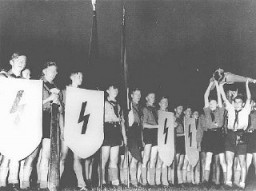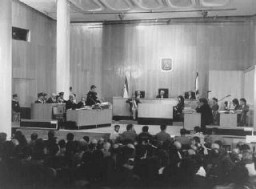You searched for: BOB%E4%BD%93%E8%82%B2%E3%80%90%E6%89%8B%E5%8A%A8%E8%BE%93%E5%85%A5%E2%88%B6___bet163.net___%E3%80%91%E6%9C%80%E6%96%B0%E5%9C%B0%E5%9D%80%E8%AF%B7%E6%94%B6%E8%97%8F%EF%BC%8CBOB%E4%BD%93%E8%82%B2%E6%B3%A8%E5%86%8C%EF%BC%8CBOB%E4%BD%93%E8%82%B2%E5%BC%80%E6%88%B7%EF%BC%8CBOB%E4%BD%93%E8%82%B2%E5%A4%87%E7%94%A8%EF%BC%8CBOB%E4%BD%93%E8%82%B2%E5%85%A5%E5%8F%A3%EF%BC%8CBOB%E4%BD%93%E8%82%B2%E8%BD%AF%E4%BB%B6%EF%BC%8CBOB%E4%BD%93%E8%82%B2%E4%B8%8B%E8%BD%BD%EF%BC%8CBOB%E4%BD%93%E8%82%B2%E7%9B%B4%E6%92%AD%E3%80%82
<< Previous | Displaying results 91-100 of 214 for "BOB%E4%BD%93%E8%82%B2%E3%80%90%E6%89%8B%E5%8A%A8%E8%BE%93%E5%85%A5%E2%88%B6___bet163.net___%E3%80%91%E6%9C%80%E6%96%B0%E5%9C%B0%E5%9D%80%E8%AF%B7%E6%94%B6%E8%97%8F%EF%BC%8CBOB%E4%BD%93%E8%82%B2%E6%B3%A8%E5%86%8C%EF%BC%8CBOB%E4%BD%93%E8%82%B2%E5%BC%80%E6%88%B7%EF%BC%8CBOB%E4%BD%93%E8%82%B2%E5%A4%87%E7%94%A8%EF%BC%8CBOB%E4%BD%93%E8%82%B2%E5%85%A5%E5%8F%A3%EF%BC%8CBOB%E4%BD%93%E8%82%B2%E8%BD%AF%E4%BB%B6%EF%BC%8CBOB%E4%BD%93%E8%82%B2%E4%B8%8B%E8%BD%BD%EF%BC%8CBOB%E4%BD%93%E8%82%B2%E7%9B%B4%E6%92%AD%E3%80%82" | Next >>
-
Indoctrinating Youth
ArticleThe Nazi Party targeted German youth as a special audience for its propaganda messages. Read more about the indoctrination of youth.

-
Passport stamped with "J" for "Jude"
PhotoPassport issued to Lore Oppenheimer, a German Jew, with "J" for "Jude" stamped on the card. "Sara" was added to the names of all German Jewish women. Hildesheim, Germany, July 3, 1939.

-
Freiberg
ArticleLearn about the Freiburg subcamp of Flossenbürg, including its establishment, prisoner population, and conditions there.
-
Lea Ofner-Szemere
ID CardLea was born in the city of Sombor in northeastern Yugoslavia. When she was 3 years old, her parents divorced and she moved to Vienna with her mother, who taught English and French to Austrian children. Lea enjoyed living in Vienna as a child. 1933-39: Lea returned to Sombor almost every year to visit her mother's relatives. There, she became reacquainted with her younger half-sister, Julia, and her older half-brother, Francis, and would miss them when she returned to Vienna. In 1938, the Germans annexed…

-
Elie Wiesel
ArticleElie Wiesel was a human rights activist, author, and teacher who reflected on his experience during the Holocaust in more than 40 books. Learn more.

-
John Demjanjuk: Prosecution of A Nazi Collaborator
ArticleJohn Demjanjuk, initially convicted as “Ivan the Terrible,” was tried for war crimes committed as a collaborator of the Nazi regime during the Holocaust.

-
Henny Fletcher Aronsen describes liberation from a death march from Stutthof
Oral HistoryHenny was born into an upper-middle-class Jewish family in Kovno, Lithuania. She and her brother attended private schools. In June 1940 the Soviets occupied Lithuania, but little seemed to change until the German invasion in June 1941. The Germans sealed off a ghetto in Kovno in August 1941. Henny and her family were forced to move into the ghetto. Henny married in the ghetto in November 1943; her dowry was a pound of sugar. She survived several roundups during which some of her friends and family were…

-
Hermann Ludwig Maas
ArticleHermann Ludwig Maas, a Protestant pastor in Heidelberg, Germany, was a rescuer and clergyman who stood in solidarity with the Jewish community.
-
Dr. Robert Ritter visits a "Gypsy camp"
PhotoDr. Robert Ritter talks to several residents in a Zigeunerlager ("Gypsy camp"). Hamburg, Germany, 1940. During the Nazi era, Dr. Robert Ritter was a leading authority on the racial classification of people pejoratively labeled “Zigeuner” (“Gypsies”). Ritter’s research was in a field called eugenics, or what the Nazis called “racial hygiene.” Ritter worked with a small team of racial hygienists. Among them were Eva Justin and Sophie Ehrhardt. Most of the people whom Ritter studied and…

-
Eva Justin interviews a Romani woman interned in a "Gypsy camp"
PhotoA color photograph of Eva Justin interviewing a Romani woman interned in a "Gypsy camp." Vienna, Austria, 1940. During the Nazi era, Dr. Robert Ritter was a leading authority on the racial classification of people pejoratively labeled “Zigeuner” (“Gypsies”). Ritter’s research was in a field called eugenics, or what the Nazis called “racial hygiene.” Ritter worked with a small team of racial hygienists. Among them were Eva Justin and Sophie Ehrhardt. Most of the people whom Ritter studied and…

